Introduction
The Independent Labour Party (ILP) was formed in 1893 under the leadership of James Keir Hardie, with the chief objective to establish a classless society and secure the collective ownership of the means of production, distribution and exchange. On 27 February 1900, representatives of the ILP, the Social Democratic Federation and the Fabian Society met with trade union leaders in London. A resolution passed at this conference created the Labour Representation Committee, which became the Labour Party in 1906.
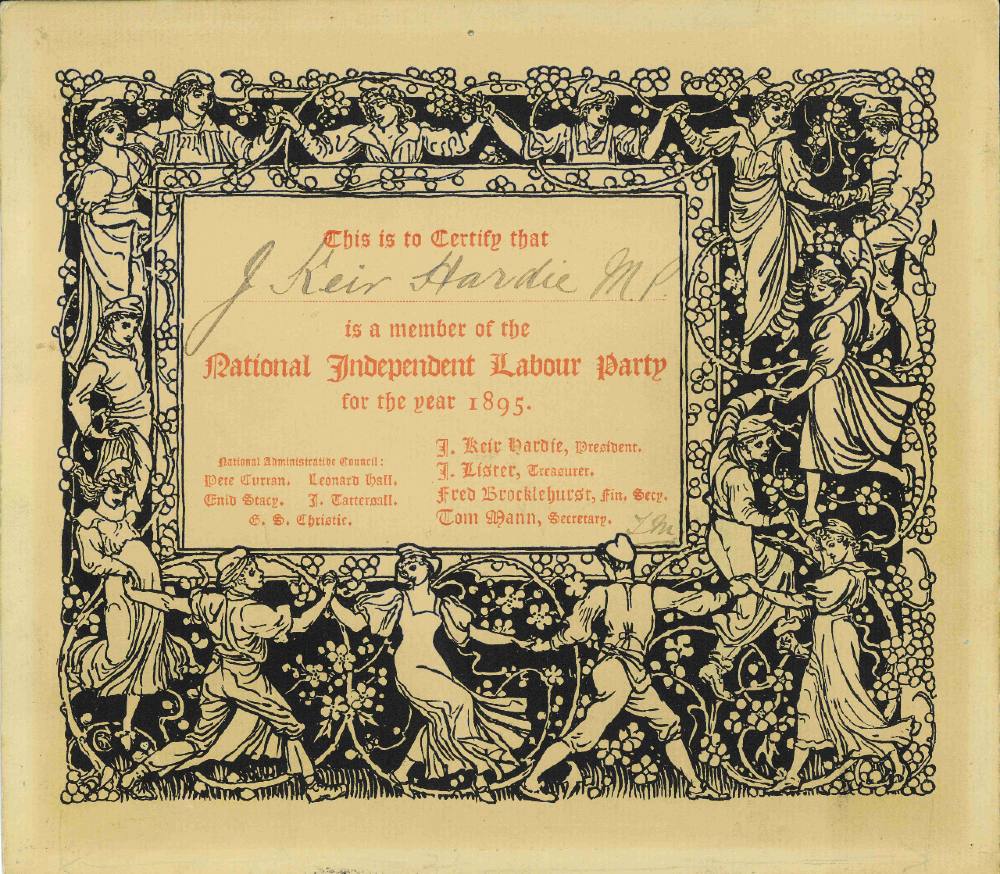 Keir Hardie’s ILP Membership card, 1895. In the early 1890s a working class independent labour movement emerged in the north of England based on factories, mills and mines. Socialist leaders and trade unionists like Hardie worked to organise socialist and labour groups across the country into a national party.
Keir Hardie’s ILP Membership card, 1895. In the early 1890s a working class independent labour movement emerged in the north of England based on factories, mills and mines. Socialist leaders and trade unionists like Hardie worked to organise socialist and labour groups across the country into a national party.
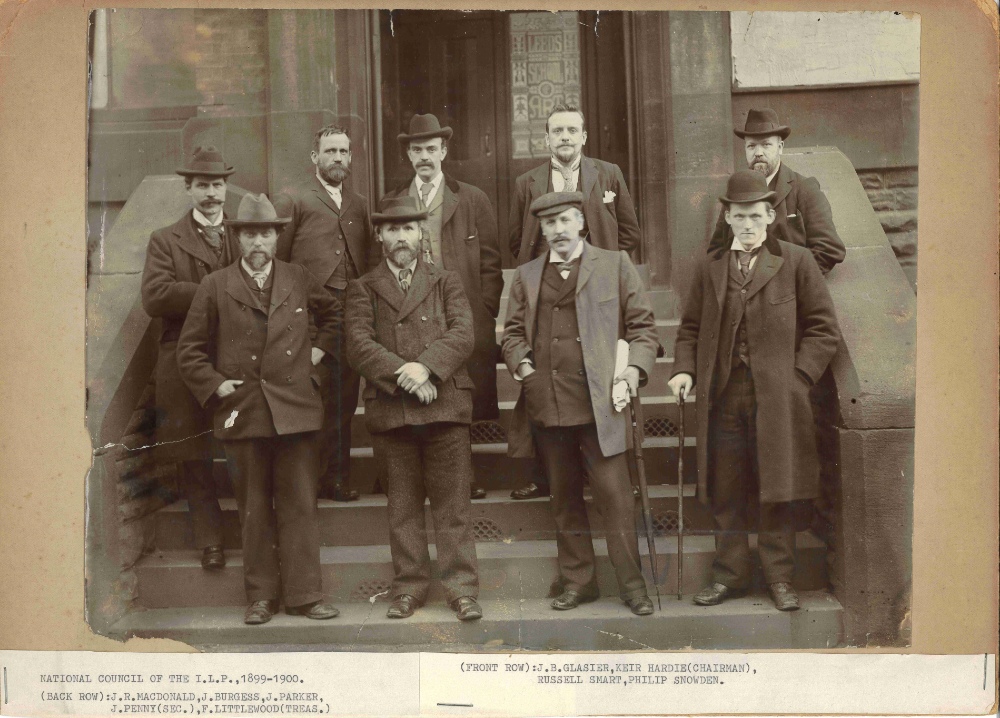 Photograph of the National Council of the ILP, 1899-1900. Pictured are both Keir Hardie (front row, second from left), first parliamentary leader of the Labour Party, and Ramsay MacDonald (back row, far left), who would go on to become the first Labour Prime Minister in 1924.
Photograph of the National Council of the ILP, 1899-1900. Pictured are both Keir Hardie (front row, second from left), first parliamentary leader of the Labour Party, and Ramsay MacDonald (back row, far left), who would go on to become the first Labour Prime Minister in 1924.
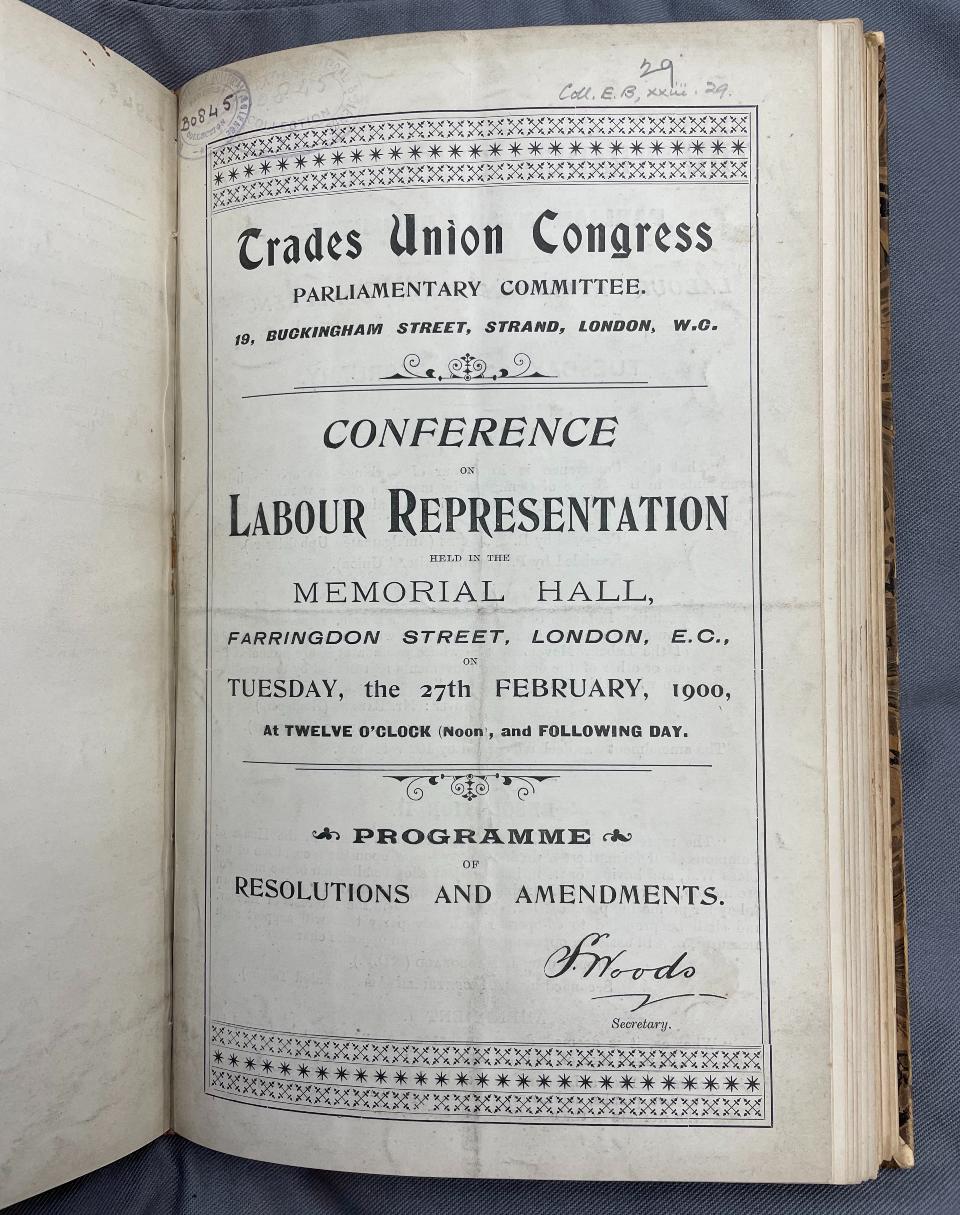
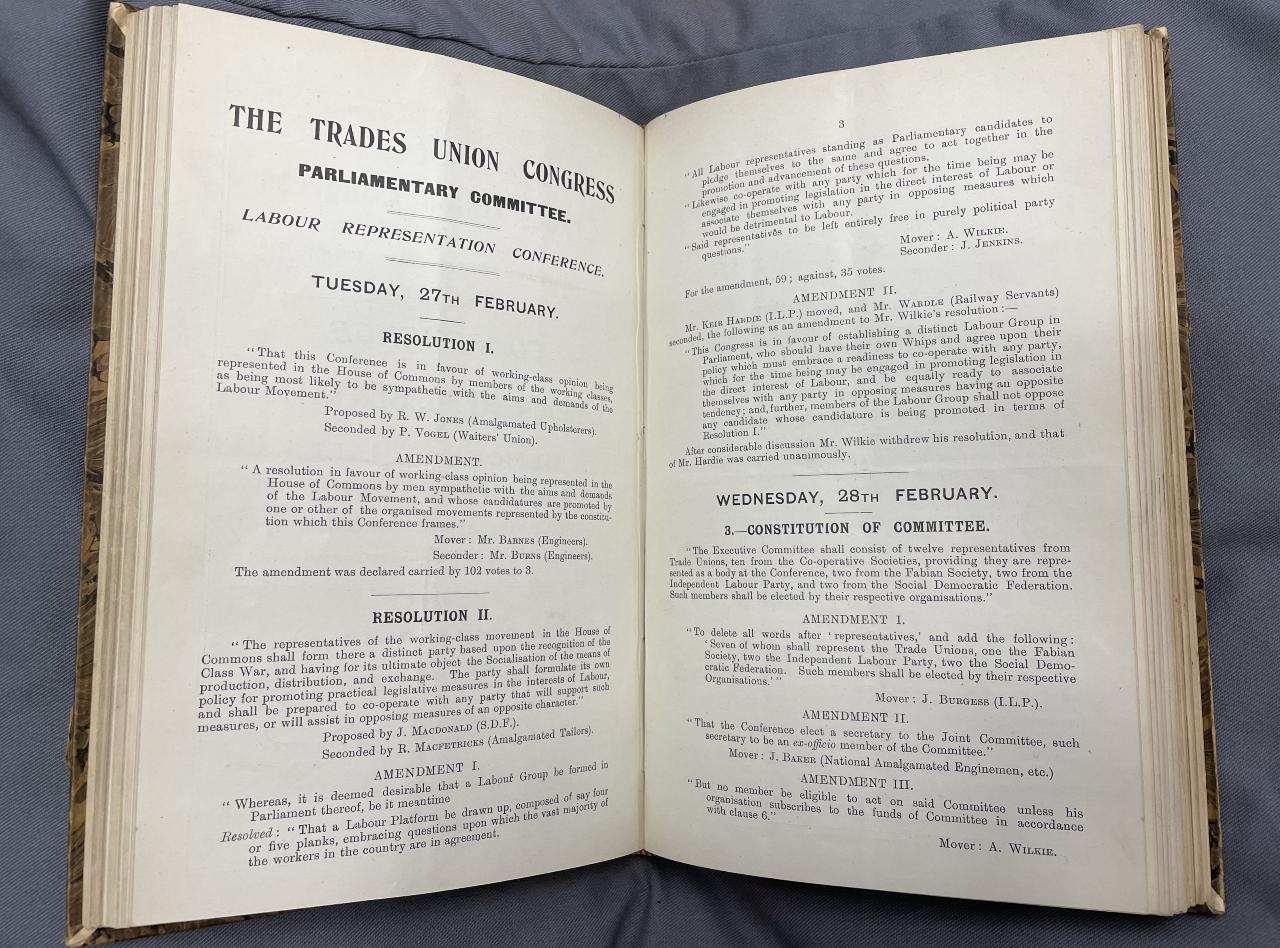 Programme of resolutions and amendments from the Conference on Labour Representation, 1900. Following a debate, the 129 delegates agreed to pass Hardie’s motion to establish a distinct Labour Group in Parliament.
Programme of resolutions and amendments from the Conference on Labour Representation, 1900. Following a debate, the 129 delegates agreed to pass Hardie’s motion to establish a distinct Labour Group in Parliament.
The General Election of 1997
In the General Election 1997 the Labour Party gained an unprecedented majority of 179 seats over all other parties and their share of the vote exceeded 40% for the first time since 1970. The Conservatives experienced their worst defeat since the election immediately following the Great Reform Act of 1832; the total number of Tory votes was the lowest in the era of universal suffrage and they lost all seats in Scotland and Wales. The election was record-breaking in other ways too – the Liberal Democrats obtained a post-war record of 46 seats, more cabinet ministers were defeated than in any other election, and the proportion of women entering the House of Commons doubled from 60 to 120.
 Tony Blair cover, New Labour magazine, 1997. Tony Blair became leader of the opposition in 1994 and oversaw a period of renewal within the Labour Party, applying centralising changes and informally adopting the name “New Labour”.
Tony Blair cover, New Labour magazine, 1997. Tony Blair became leader of the opposition in 1994 and oversaw a period of renewal within the Labour Party, applying centralising changes and informally adopting the name “New Labour”.
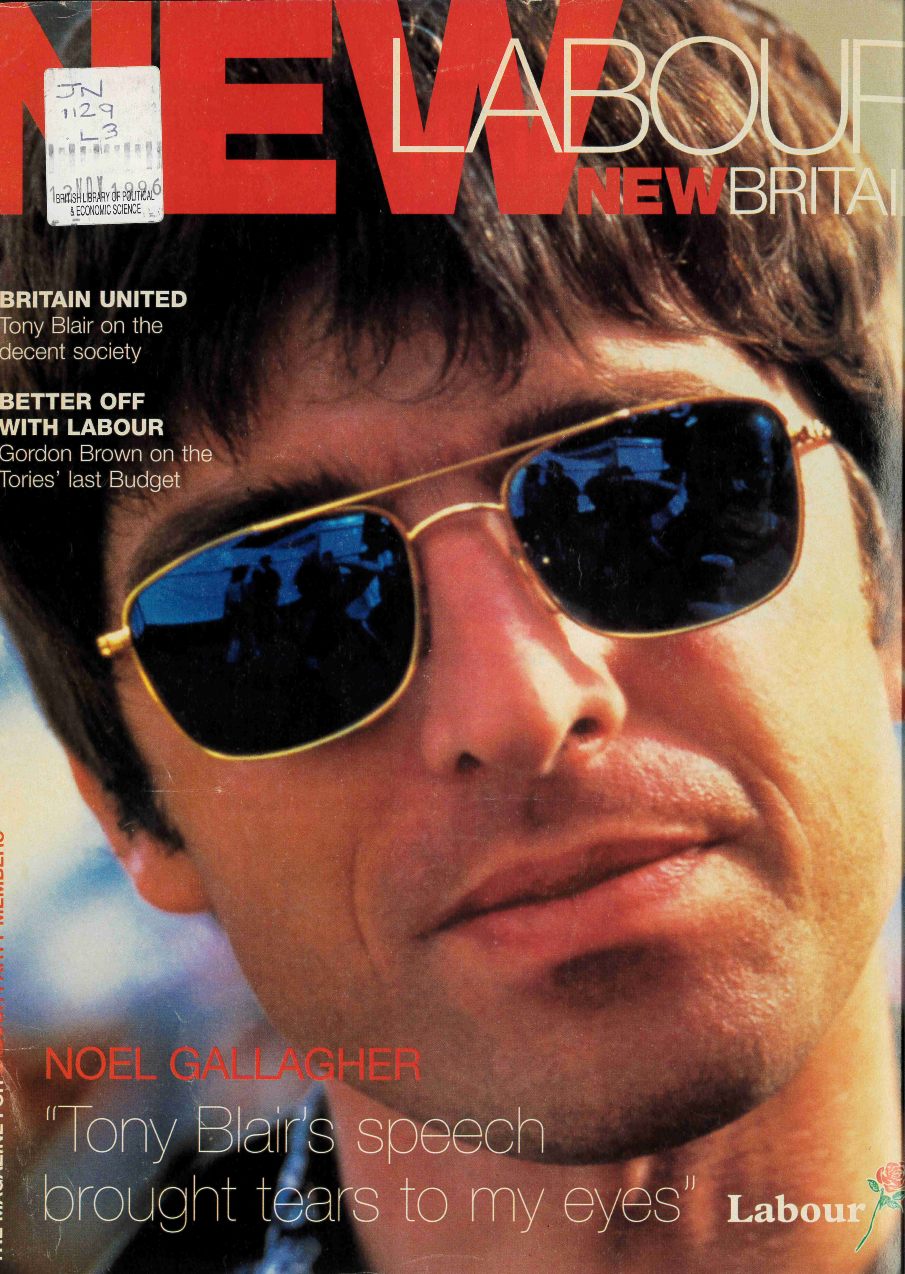 Noel Gallagher of Britpop band Oasis, New Labour magazine, 1997. Blair spoke often of his desire to recreate Britain as a “young country”. New Labour tapped into “Cool Britannia” culture by courting endorsement from musicians, fashion designers, comedians and writers.
Noel Gallagher of Britpop band Oasis, New Labour magazine, 1997. Blair spoke often of his desire to recreate Britain as a “young country”. New Labour tapped into “Cool Britannia” culture by courting endorsement from musicians, fashion designers, comedians and writers.
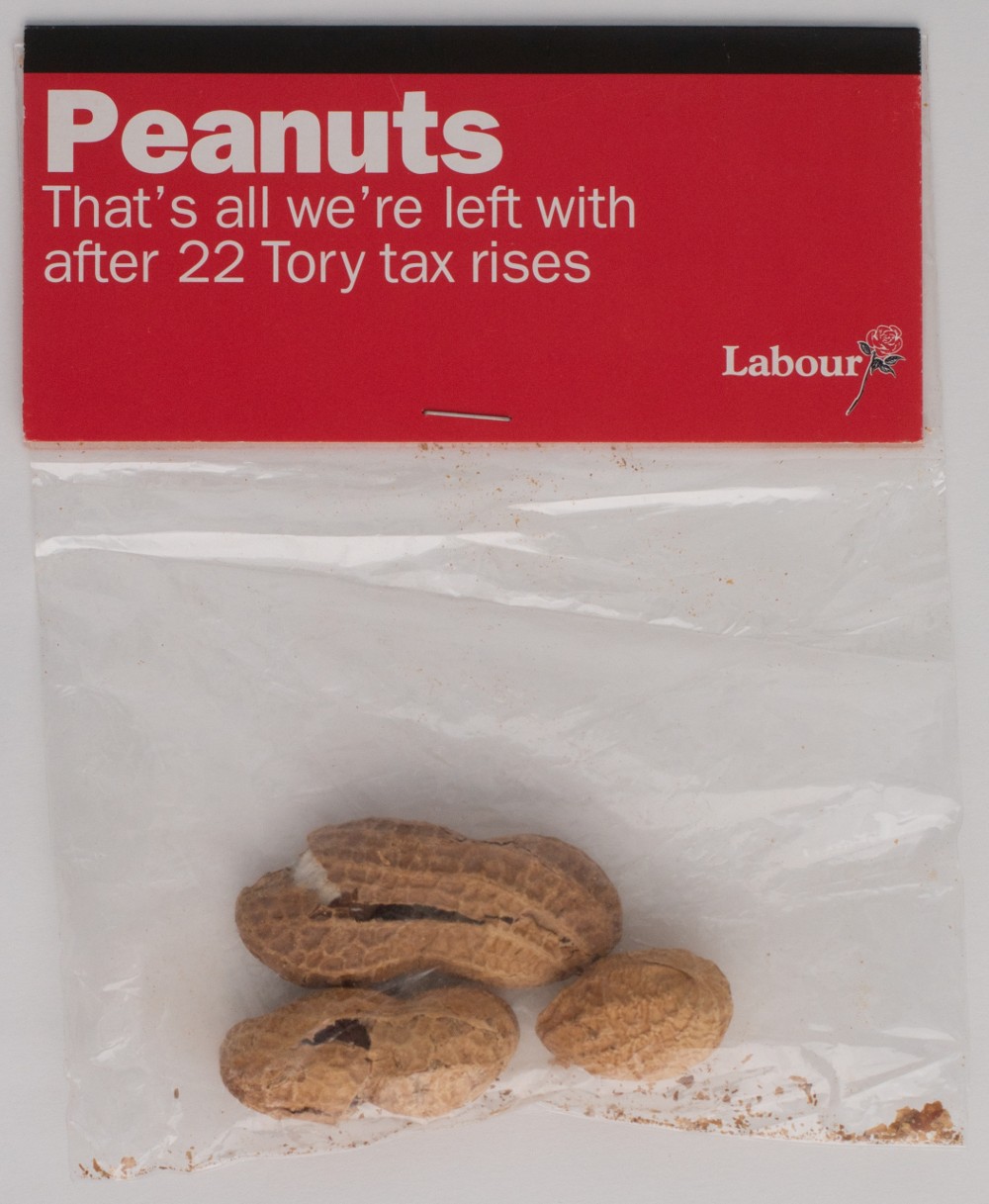
Promotional peanuts, 1997. Labour’s campaign claimed that Tory tax rises since the General Election 1992 had cost the average family £2,000 in extra tax. By election day, exit polls suggested that 40% of respondents trusted the Labour Party to take the right decisions on the economy and tax, versus 35% the Conservatives.
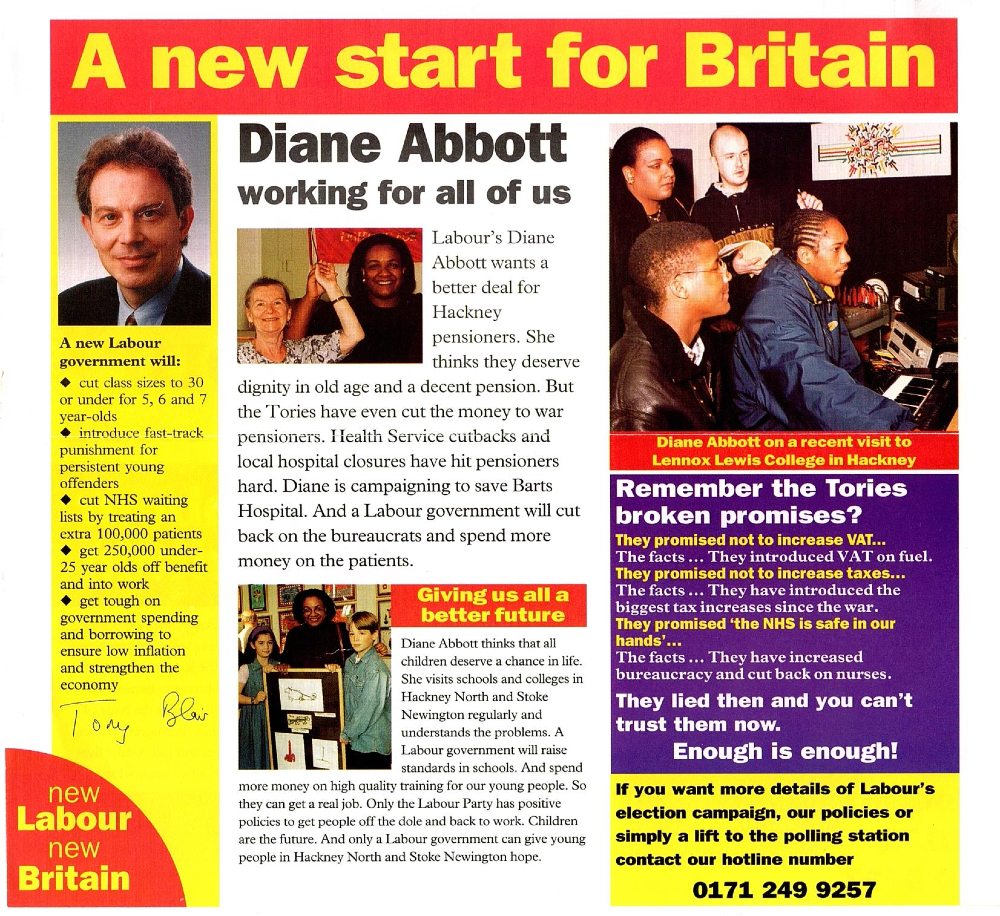 Example of a Labour election campaign leaflet, 1997.
Example of a Labour election campaign leaflet, 1997.
Go to the next page